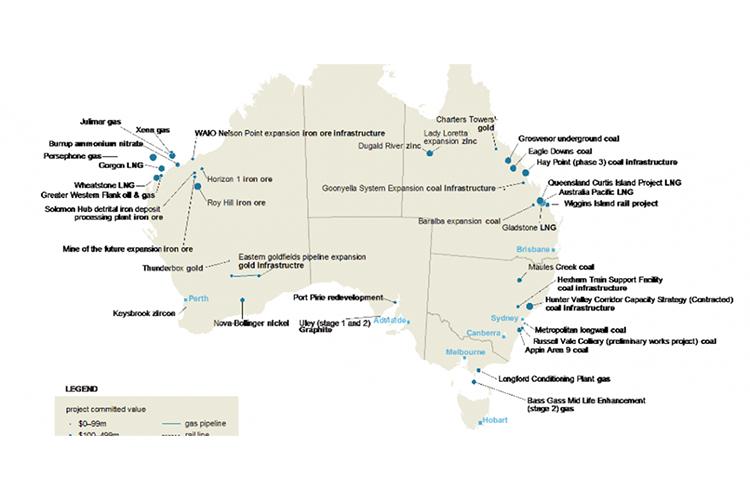5/6, Railway Avenue, Nugegoda, Sri Lanka
(Closed on Mercantile Holidays)
Australia’s Construction Industry: Profile and Outlook. July 2015
January 20, 2017

The construction industry is a significant driver of economic activity in Australia. It is Australia’s third largest industry, behind only mining and finance, and produces around 8% of our Gross Domestic Product (GDP), in value added terms. It comprises over 330,000 businesses nationwide and directly employs over one million people (around 9% of the total workforce). It produces the buildings and infrastructure that are essential to the operation of all other industries, adds to the wealth and capital stock of the nation and underpins the productivity improvements that are necessary to support our future prosperity and incomes.
Demand for construction activity is driven by economic factors including population growth, income growth, industry activity, technology changes, commodity cycles, consumer sentiment, interest rates and inflation. Government policies affecting residential building, pricing and infrastructure development (including taxation, land allocation, industrial and planning policies) are key influences. The availability, price and location of resources, including skilled labour, building materials and building equipment are other key determinants of the pace of growth in the industry. The supply chain for construction is complex and strongly interrelated, encompassing manufacturing (materials, equipment components), services (engineering, design, surveying, consulting, lease management) and traditional construction trades.
The construction industry operates in both the private and public sectors, across three broad areas of activity:
- Engineering construction (major infrastructure, mining and heavy industrial resource based projects;
- Non-residential building (including offices, shops, hotels, industrial premises, hospitals, entertainment facilities) and;
- Residential building (houses, flats, home units, townhouses)
Total construction activity in 2014 was valued at $204.5 billion, in real (inflation-adjusted) volume terms. Engineering construction was the largest sector (56.1% of all construction activity in 2014) followed by residential building (26.6%) and non-residential building (17.2%).
The five years to 2012 saw the volume of total construction work done increase by $71.3b, implying an average annual growth rate of 16.2%. $68.3b worth of this increase was in engineering construction, in line with the substantial investment phase of the mining boom which led to historically high levels of activity in infrastructure and resources related construction. The mining investment boom saw the annual value of construction peak at $213b in 2012
The construction industry is the third largest employing industry in Australia (behind only healthcare and retail trade), with 1.05 million employees (around 9% of all workers) in May 2015.
Employment in the industry has been characterised by relatively solid recovery in 2013 and outright growth through 2014. This reflects employment gains in the building construction sector due to the recovery in housing and apartment building activity. Despite job losses in the engineering (heavy and civil) construction sector in 2014 and 2015, total construction employment has strengthened. This reflects a solid pick-up in construction services’ employment and continued jobs growth in the building construction sector. Reflecting their bigger populations, employment in the construction industry is concentrated in New South Wales, Victoria and Queensland. These three states together account for 74% of all construction employment. The majority of construction workers (65%) are employed in trade services. 26% are in building construction, 7% are in heavy and civil construction and 2.5% are in general construction services.
Notable employment and employee characteristics in this industry include far higher shares of full-time, male, younger, self-employed, certificate-qualified workers than for most other industries:
- 85% of construction workers are full-time, compared with 54% across all industries, and 15% were part- time, compared to 31% for all industries (as of Feb 2015).
- average hours worked per week by construction employees was 38.3 hours in May 2015, compared to 33.9 hours for employees in all industries. It has the fourth highest average hours worked of any industry, exceeded only by mining (43.5 hours), agriculture (40 hours) and wholesale trade (38.6 hours).
- 89% of construction workers are male, compared with 54% across all industries (in February 2015). “Male representation is particularly high in Building Structure Services (92.6%) and Building Completion Services (92%).
Approximately 338,000 businesses were registered as operating in the construction industry as of June 2014 (ABS business register). These included project based businesses (major builders and contractors, designers, engineers, project managers); property sector businesses (organisations that develop, commission, own, manage and lease buildings and other infrastructure) and; the traditional construction trades (concreting, bricklaying, structural steel and carpentry services).
Due to the construction industry’s diverse range of products and services, and its traditional structure of sub- contracted and legally licenced trade specialisations, few individual businesses grow to a size that commands a substantial market share. As such, the industry is overwhelmingly comprised of small businesses with fewer than 20 employees (98.6% of construction businesses). The majority (82.2%) of these small businesses operate in the trade services sector of the building industry. Medium sized businesses (employing between 20 and 200 employees) made up 1.3% of the total number of businesses while medium to large businesses (employing 200 or more persons) accounted for just 0.1% of the total. Whilst the majority of companies participating in the industry are Australian-owned, the majority of tier one contractors are foreign-owned, if not foreign controlled.
Only 5.9% of construction businesses generated more than $2 million of revenue in 2013-14, while the majority (60.8%) generated revenue of less than $200,000. The majority of construction workers (65%) are employed in trade services. 26% are in building construction, 7% are in heavy and civil construction and 2.5% are in general construction services.
Based on recent labour market trends, the Australian Government Department of Employment (May 2015) expects growth in construction industry employment of 137,900 (13%) over the five years to November 2019. This is well above the growth rate of 10% that it expects for total employment, so construction will account for a greater share of employment (and of employment growth) over this forward period.
The Department expects construction employment growth over the five years to November 2019 to be strongest in the Building Installation Services sector (up by 50,400 or 21%), followed by Building Completion Services (24,800 or 13%), Other Construction Services (15,800 or 14%) and Building Structure Services (12,600 or 16%).
In 2014-15, direct construction industry output contributed 7.8% to Australia’s Gross Domestic Product (GDP) up from around 6.5% a decade ago. This makes the construction industry Australia’s third largest contributor to GDP in terms of the volume of its output. Only the financial and insurance services (8.7%) and mining (8.8%) sectors contribute larger shares of direct output to GDP. In addition to this direct contribution to GDP, construction activity supports a large upstream and downstream supply chain.







